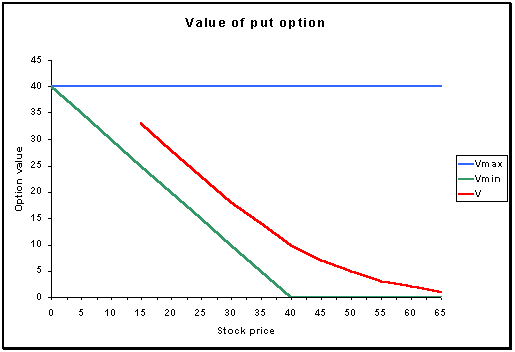Put Options by
Post on: 29 Май, 2015 No Comment

Put Options — Definition
Put Options are stock options that gives its holder the POWER. but not the obligation. to SELL the underlying stock at a FIXED PRICE by a fixed EXPIRATION DATE.
Put Options — Introduction
Put Options are the least understood of the 2 kinds of stock options. The other being Call Options that give you the right to buy the underlying stock for a fixed price. Put Options enable you to sell the underlying stock at a price fixed right now no matter how low it falls in future. That said, rarely are put options really used as a tool to sell your stocks but as a tool to capture value as the underlying stock drops and then sell the put options at a profit! Apart from being an incredibly flexible and risk limited leverage instrument, Put Options are fantastic hedging instruments for any stock portfolios.
Put Options allow investors to do something relatively unfamilar to the stock trading world and that is, to profit from a downturn in stocks without getting into margin calls or shorting anything. Shorting stocks exposes the investor to unlimited upside risk whereas buying put options puts at risk nothing more than the price you paid for the put options! There is no shorting needed! No shorting, No margin, Limited Loss and Unlimited profits is what sets the buying of Put Options apart from shorting stocks!
How Do Put Options Work?
Put Options are financial contracts between a buyer and a seller. The seller or writer of Put Options is giving the Buyer of those Put Options the right to sell to him stocks at a price fixed and agreed upon in the Put Options contract. The buyer or holder of these Put Options can now hold on to them, hoping that the stocks will drop in price over time, before the Put Options contract expires. and then either sell the Put Options on to another buyer at a higher price or buy the stocks at the prevailing market price and then exercise the right vested in the Put Options to sell the stock to the seller at the higher agreed price, turning a profit.
Clearly, the seller or writer of Put Options is expecting the underlying stock to stay stagnant or to go up so that he/she can make a profit out of that sale without having to really buy the stocks from the holder of the Put Options.
The buyer of those Put Options is clearly expecting those same stocks to go down and is willing to pay a small price to speculate on such a move. This expectation is also captured in the popular investor sentiment indicator known as Put Call Ratio. Put Call Ratio is the ratio of the amount of put options traded versus call options traded.
Parties in Put Options Transaction
Here’s an example of what happens in a Put Options transaction:
Put Options Example
XYZ company shares are trading at $40 right now. $40 strike price Put Options are trading at $2.00.
John expects XYZ company shares to go down and shorted 100 shares of XYZ company at $40.
Peter expects XYZ company shares to go down too and bought 1 contract of Put Options of XYZ company (representing 100 shares) for $200.
Peter only lost the $200 he out towards the purchase of the Put Options and nothing more.














